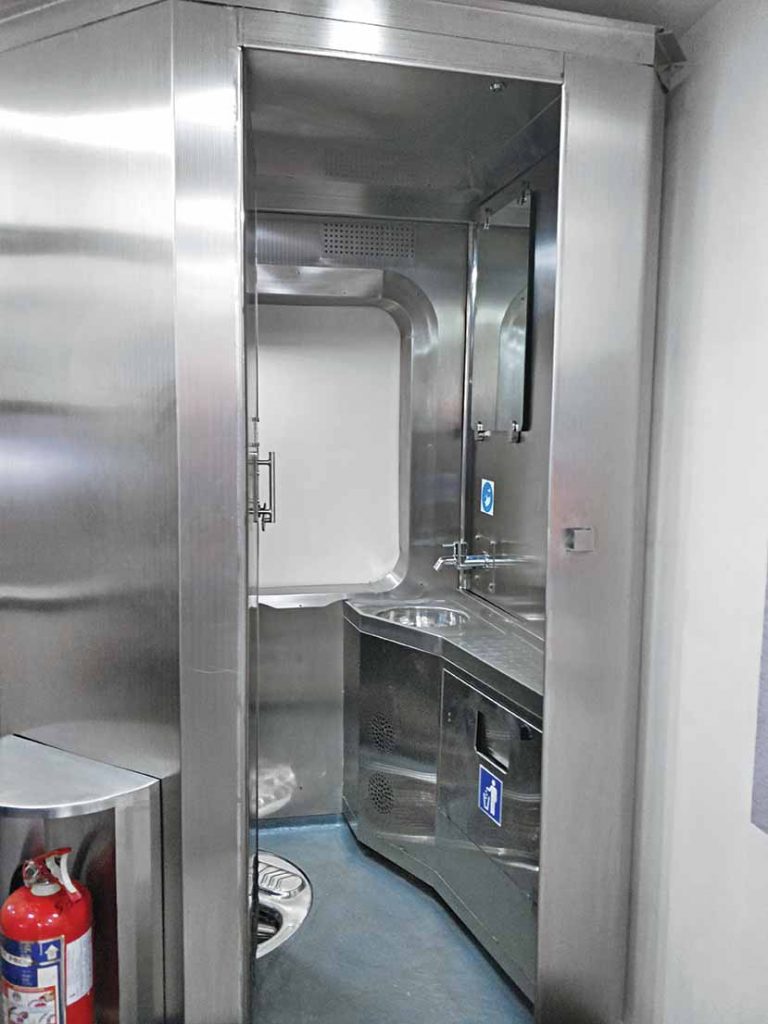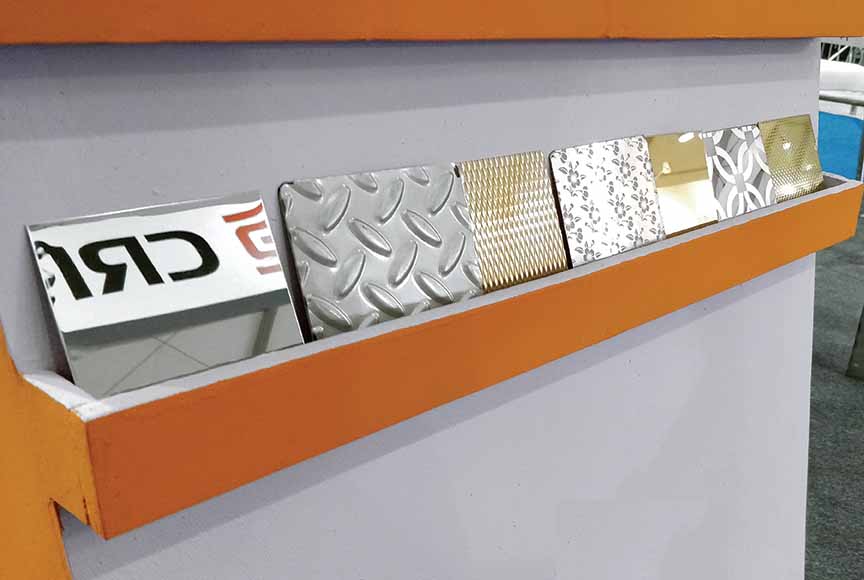Jindal Stainless is looking at the CV industry for growth.
Story & Photos by:
Bhargav TS
Founded by O P Jindal in 1970, Jindal Stainless is increasing its focus on value-added products. This is in-line with the rising demand from the automotive industry among others. Investing in a facility in Orissa, the Hisar (Haryana) based company is keen to cater to the needs of CV manufacturers and automotive suppliers. Keenly following the changes the CV sector is undergoing, the company – one of the largest stainless-steel conglomerates in India and ranking among the top 10 stainless-steel firms in the world, is confident of dialling good growth through value-added products. According to Vijay Sharma, Senior Vice President, Head – Sales & Distribution (Domestic & Exports), the company is aligning with the market needs, and linking itself with the growth that is taking place in the country.
Partnering with Indian Railways for more than 12 years, and coming to command a good chunk of the domestic locomotive market, Jindal Stainless is looking at leveraging the expertise it has gained from serving the locomotive industry to carve out a bigger share of the automotive market. Banking on a strong distribution network, the company is confident of the growth potential the auto business has to offer. Committed to serve the needs of its automotive clients in the most efficient manner, Jindal Stainless is banking on the automotive grades that it offers. Drawing attention to the implementation of High Strength Steel (HSS) and Advanced High Strength Steel (AHSS) in automotive body structures, and which provide scope to light weight, Sharma explained, “Automotive and transport sectors are making increasing use of stainless steels to reduce weight, improve aesthetics, enhance safety and minimise life cycle cost.” “Characterized by superior fire and corrosion resistance, they ensure safety and reliability,” he said. Exhibiting superior combination of high strength, ductility, formability and toughness compared to other metals and alloys, stainless-steel products are providing automotive designers and engineers an ability to produce light weight designs that are powerful, efficient and have a smaller carbon footprint.
Offering the advantage of higher load carrying capacity and lower maintenance cost, value-added stainless-steel products, said Sharma, are easily recycled at the end of its long life. Playing a major role in wagons and coaches built by the Integral Coach Factory, Chennai, the company is pursuing a target of increasing per capita consumption in two to three years. Stating that they are the right partners, and fully equipped to address client needs, Sharma explained, “In any coach, there are multiple applications of stainless steel, including the body, underframe, sidewall, etc. To address such needs we have the right products as well as the support system in the form of vendors. Our share in coaches is more than 70 per cent. The total value amounts to around 10,000 tonnes per month. It is valued at approximately Rs.150 crores. And, this is the value of stainless steel alone.”
Supplying value-added products to the new Linke Hofmann Busch (LHB) coaches that have come to India, Jindal Stainless is confident of making a mark in the CV sector. Stating that the LHB coaches are a German design, and have been adopted by the Railways, Sharma averred, “Unique about the design is, that in case of a crash, the coaches will not run into each other. Stainless-steel has played a key role in achieving this design feature.” “In one LHB coach, around 11 to 12-tonnes of stainless steel has been used. Around 3200 of such coaches have been made so far. By 2020, the number would have risen to 8000 coaches all over India,” he added. Expecting to grow on a global scale by five-per cent, the company is having high dependency on railways. By carving out a place in the CV industry as part of their auto industry strategy, and with the supply of appropriate titanium, niobium or dual stabilized grades with very low interstitial content as well as austenitic stainless steels, the company is confident of growing exponentially in the next five years. In the last five years, it grew more than 10 per cent. Keeping an eye on new austenitic, ferritic and duplex stainless steels that are evolving, and the extensive use they will find in the automotive and transport industry, Jindal Stainless is keen at double growth in the next two years.
Drawing attention to some of the steel grades that the company produces for railways, Sharma informed that they have invested a good deal in grades. Finding support in the government’s push for ‘Make in India’, Jindal Stainless is investing in capacity expansion. Having 1.8 million tonnes melting capacity, the company is adding capacity to turn out hot rolled, cold rolled and other value-added products to the portfolio. For railways, the company produces a specific grade. According to Sharma, Jindal Stainless has invested around Rs.70 to Rs.80 crores to develop it. With monthly production amounting to an average of 130 thousand tonnes, the company has been supplying around 10 to 11 thousand tonnes per month to the Railways. It amounts to 70 per cent of the industry’s current requirement. Having acquired an amount of agility as a private player, the company has come to command a market share of 63 per cent in India. Some 20 per cent is exported globally. Opined Sharma, that a distinct shift in the use of stainless-steel from run of the mill applications like cookware and other durables to high value and demanding applications like processing industries, railways, automobiles, buildings, etc., is taking place. It is in-line with the global trend, he added. Stating that the acceptance of stainless-steel is rising manifolds, Sharma explained, “The global per capita consumption of stainless steel is around 5 kg. In India, it is two kilograms. There is a huge opportunity as the per capita consumption is set to increase in India.”
Claimed to be growing at five-per cent CAGR on the basis of the material’s versatility, stainless-steel in India is found in either the form of flat products or long products. “Long products,” according to Sharma, “are used globally.” In India, flat products amount to approximately 2.4 million tonnes per annum whereas long products amount to approximately 20 per cent. The total consumption figure amounting to an estimated three million tonnes per annum of production and consumption, India is the second largest producer of stainless steel in the world after China. It is a good consumer of stainless-steel as well. Used extensively in railways and automobiles, the migration of automobiles to BSVI will see the use of stainless steel rise further. Especially in CVs. Set to play a role in emission regulating devices among others in CVs, the company is also eyeing the bus body building industry for the increasing use of value-added stainless steel products. The bus body building industry was until now extensively using carbon steel, said Sharma. Stating that stainless steel is an alloy of steel with chromium content amounting to 10.5 per cent by mass, Sharma averred, “We are looking to be a key player in India.” Pointing at the need to curb the ability of China to dump and disrupt the market, Sharma mentioned that along with chromium, other metals like nickel and molybdenum are added to enhance the properties. These include hardening, corrosion resistance, heat treatment, machining ability, etc. With near endless areas of application, stainless steel, Sharma signed off, is the fastest growing metal over the past few decades, surpassing all the other important metals and alloys by a significant margin.





















